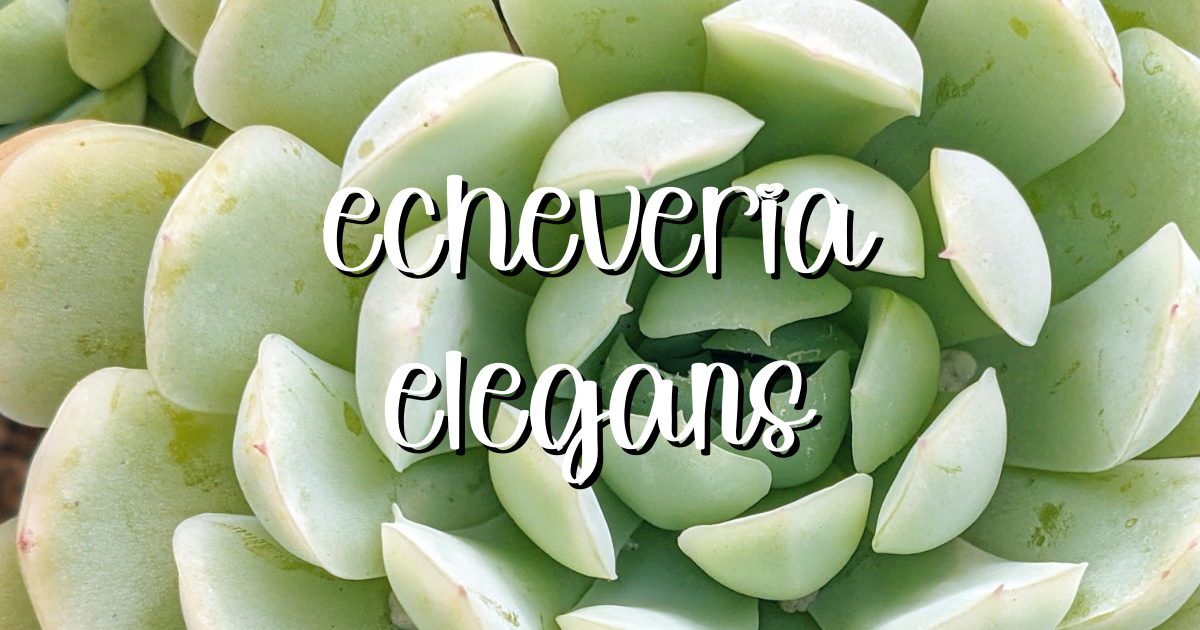Echeveria elegans, also known as ‘Mexican Snowball’, is a popular succulent with a rosette-like shape. It has a blue-green color and is covered with a powdery coating of farina. The leaves are spoon-shaped and can grow up to 3 inches long. During the spring and summer, the plant produces bell-shaped flowers that range from pink to orange.
Dig in!
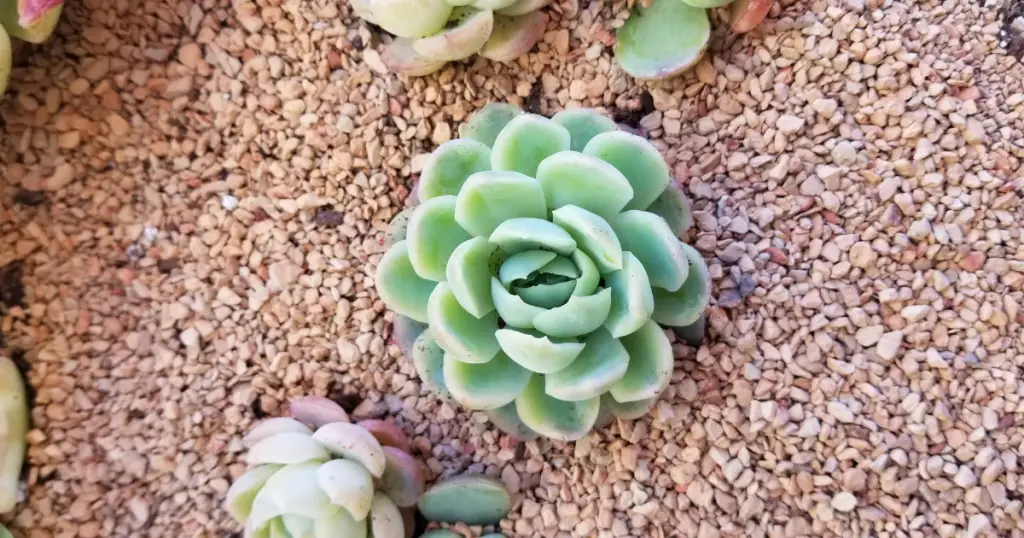
Native Habitat
Echeveria elegans ‘Mexican Snowball’ is native to Mexico, specifically the central region. It thrives in hot, arid climates with well-draining soil. In the wild, it grows in rocky crevices and on steep slopes.
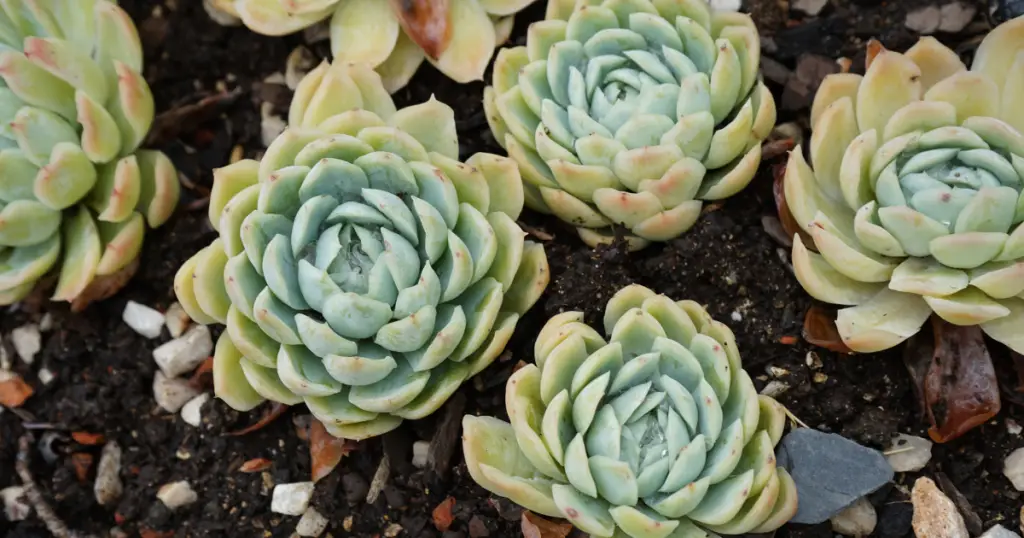
It is adapted to living in dry conditions and is known for its ability to withstand drought. This succulent has developed specific mechanisms to conserve water, such as the ability to close its stomata during hot and dry periods, reducing water loss through transpiration. Its natural habitat is also characterized by bright and intense sunlight, which makes it a great choice for sunny locations in your garden or indoors.
You might also like: How to Grow Succulents Indoors Without Killing Them
In addition to its native habitat in Mexico, Echeveria elegans ‘Mexican Snowball’ has also been introduced to other parts of the world, where it is now grown as an ornamental plant. Despite being native to a hot and arid climate, Echeveria elegans ‘Mexican Snowball’ can adapt to a range of temperatures and conditions, making it a versatile addition to any collection of succulents.
You might also like: Native Habitats of Succulents: Explore the Incredibly Diverse Environments
How to Water Echeveria elegans
Echeveria elegans ‘Mexican Snowball’ requires infrequent watering. Water the plant when the soil is dry to the touch. It is best to water deeply but infrequently, allowing the water to fully penetrate the soil. Avoid getting water on the leaves, as it can cause damage to the powdery coating.
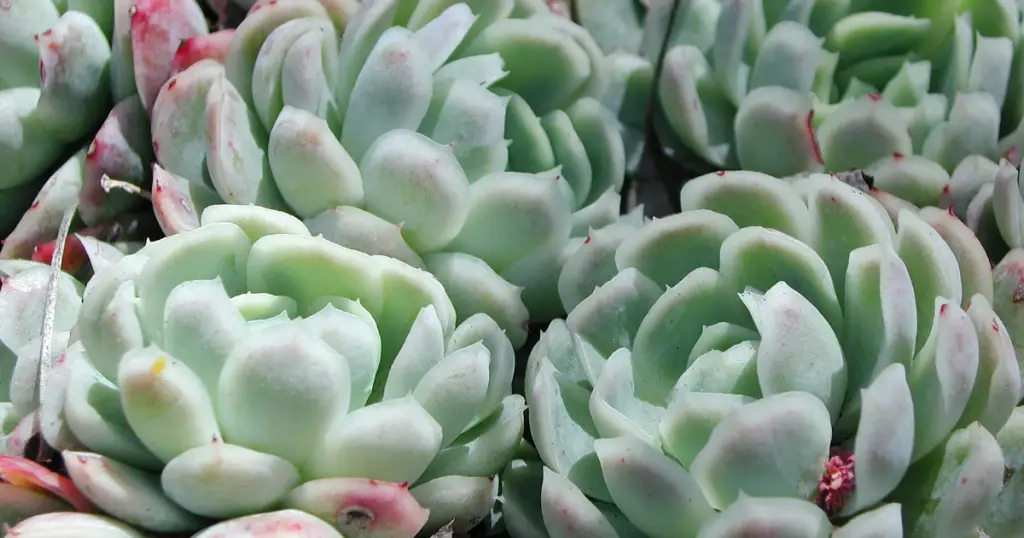
During the active growing season in spring and summer, Echeveria elegans ‘Mexican Snowball’ needs more frequent watering compared to the dormant season in fall and winter. In the growing season, it is recommended to water Echeveria elegans ‘Mexican Snowball’ every 10-14 days, while in the dormant season, you can reduce the frequency to once a month or even less depending on the environmental conditions.
You might also like: 5 Essential Mental Health Benefits of Gardening Succulents and Cacti
Make sure the soil is dry at least an inch below the surface before watering. Use a well-draining soil mix and a pot with drainage holes to ensure excess water can escape. If you notice the leaves turning yellow or mushy, it may be a sign of overwatering, and you should adjust your watering schedule accordingly.
You might also like: Root Rot in Succulents: How to Identify and Treat the Problem
Echeveria elegans ‘Mexican Snowball’ can tolerate short periods of drought and underwatering better than overwatering. Overwatering can lead to root rot and ultimately kill the plant. Always err on the side of underwatering rather than overwatering and make sure the soil is completely dry before watering again.
You might also like: How & When to Water Succulents So They Don’t Die
Soil
Echeveria elegans ‘Mexican Snowball’ requires well-draining soil. Turface, pumice, perlite, and coarse sand are all excellent soil amendments for Echeveria elegans ‘Mexican Snowball’. They help create a well-draining soil mix that allows water to pass through easily, preventing excess moisture from accumulating around the roots. This mix also allows air to circulate around the roots, which is important for healthy growth.
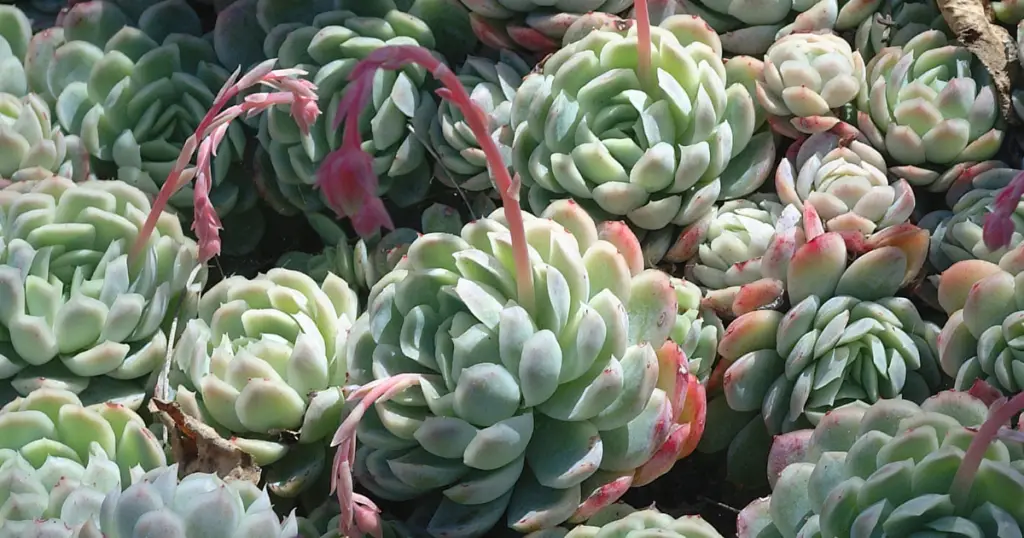
To make the soil mix, combine the Turface, pumice, perlite, and coarse sand in equal parts. Mix thoroughly, and ensure that there are no large clumps or pockets of any single ingredient. The soil should be light and fluffy, with good drainage properties.
You might also like: Succulent Soil: Ultimate Guide & 4 DIY Recipes to Keep Your Succulents Happy and Healthy
Echeveria elegans ‘Mexican Snowball’ is a sensitive plant that can be easily damaged by excessive moisture in the soil. To prevent overwatering, make sure the soil is completely dry before watering again. The use of a well-draining soil mix, combined with proper watering techniques, will help prevent issues like root rot and fungal infections that can lead to plant death.
You might also like: Why You Shouldn’t Plant Succulents in Terrariums: The Risks and Consequences
Choose a container with adequate drainage holes to allow excess water to escape. This will further ensure that the soil does not become waterlogged, which can lead to problems with the health of your Echeveria elegans ‘Mexican Snowball’.
You might also like: Drainage Hole at the Bottom of The Pot: Do Succulents Need Them? The Answer Might Completely Shock You!
How to Propagate Echeveria elegans
Propagation of Echeveria elegans ‘Mexican Snowball’ is a simple process that can be done through stem or leaf cuttings. Stem cuttings are preferred over leaf cuttings as they have a higher success rate.
You might also like: Caring for Succulents While on Vacation (Hopefully to an Amazing Place) 2023
To propagate through stem cuttings, select a healthy stem from the main plant and cut it cleanly with a sharp knife or pair of scissors. Leave the cutting to dry out for a few days until a callus forms over the cut end. Once the cutting has calloused over, plant it in a well-draining soil mix, such as a mixture of Turface, pumice, perlite, and coarse sand. Water sparingly and keep the soil moist but not waterlogged. After a few weeks, the cutting should start to root and new growth should appear.
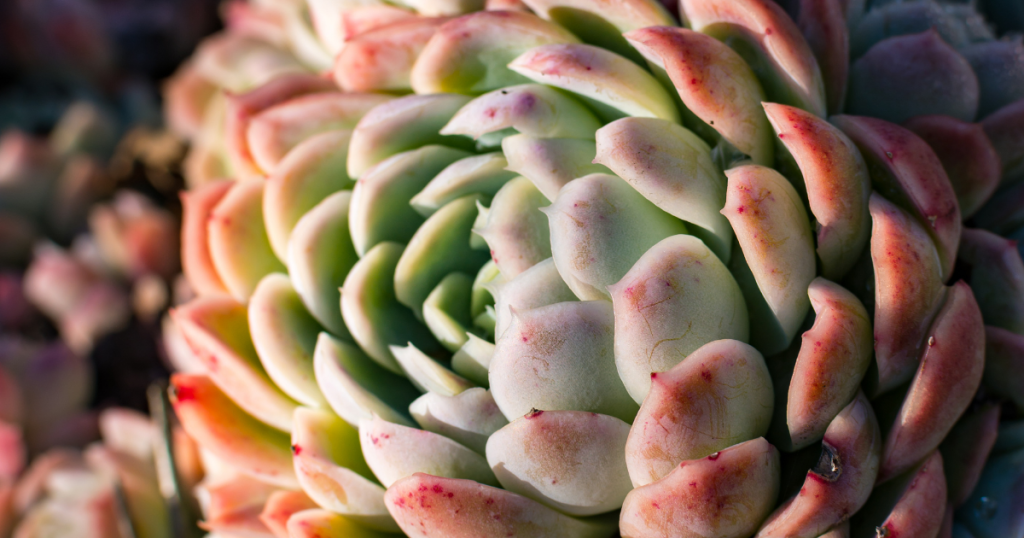
To propagate through leaf cuttings, select a healthy leaf from the main plant and remove it cleanly from the stem. Leave the leaf to dry out for a few days until a callus forms over the cut end. Once the leaf has calloused over, plant it in a well-draining soil mix and water sparingly. Keep the soil moist but not waterlogged. After a few weeks, new growth should appear from the base of the leaf and root development should start.
You might also like: Propagating Succulents 4 Ways: The Best Guide Ever
It’s important to note that not all cuttings will take, and it’s important to be patient and wait for new growth to appear. Propagation is best done in the spring or summer when the plant is actively growing, as this will increase the chances of success. Once the new plants have grown large enough, they can be transplanted into their own individual pots.
You might also like: Succulent Dormancy: 4 Easy Ways to Tell if Your Succulent is Going Dormant
Light
Echeveria elegans ‘Mexican Snowball’ thrives in bright, indirect light. It can also tolerate some direct sunlight, but too much can cause sunburn. If it isn’t getting enough light, it may become leggy and stretched out.
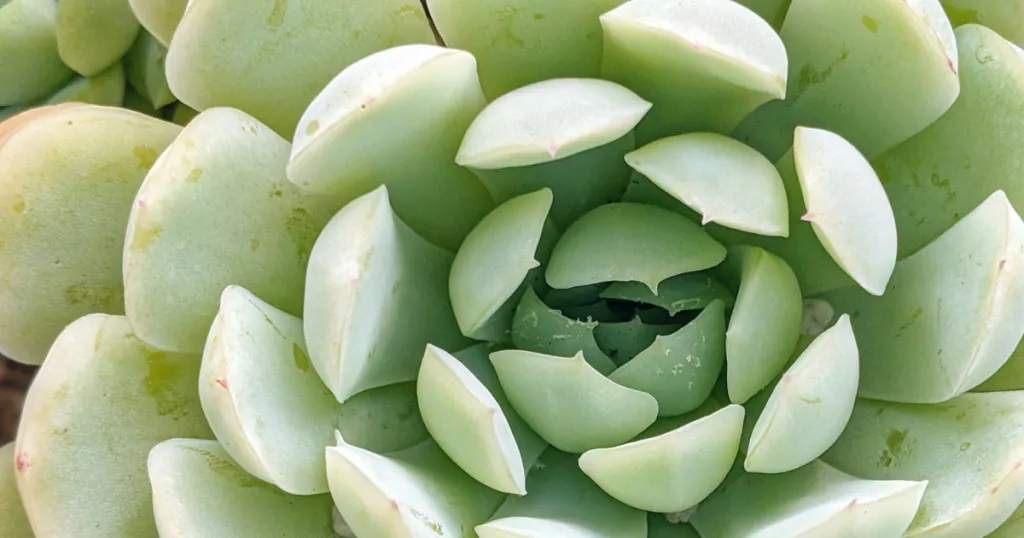
Fertilizer
Echeveria elegans ‘Mexican Snowball’ does not require regular fertilization. However, it can benefit from a light application of fertilizer during the growing season. Use a balanced fertilizer diluted to half strength and apply it once a month. If you fertilize it too much, Echeveria elegans can grow overly tall and etiolated.
You might also like: Succulent Fertilizer: The Ultimate Guide to Healthy Succulents + 8 DIY Fertilizer Recipes
Common Problems & Solutions with the ‘Mexican Snowball’
Overwatering is a common problem with Echeveria elegans ‘Mexican Snowball’. To prevent root rot, ensure that the soil is well-draining and only water when the soil is dry to the touch. Powdery mildew can also be an issue, particularly if Echeveria elegans ‘Mexican Snowball’ is exposed to high humidity. To prevent powdery mildew, ensure that the plant has good air circulation and avoid getting water on the leaves.
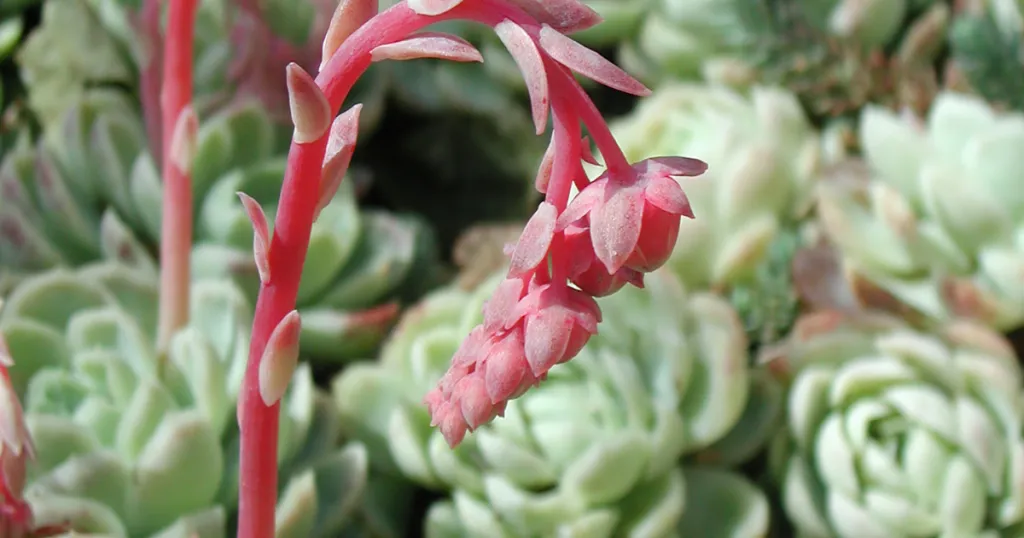
Another common problem with Echeveria elegans ‘Mexican Snowball’ is pests such as mealybugs and spider mites. Mealybugs appear as white, cotton-like masses on the leaves and stems of the plant, while spider mites cause damage to the leaves, leaving behind webbing and yellow or brown spots. To control mealybugs and spider mites, remove any infected plant parts and use a natural insecticide such as neem oil.
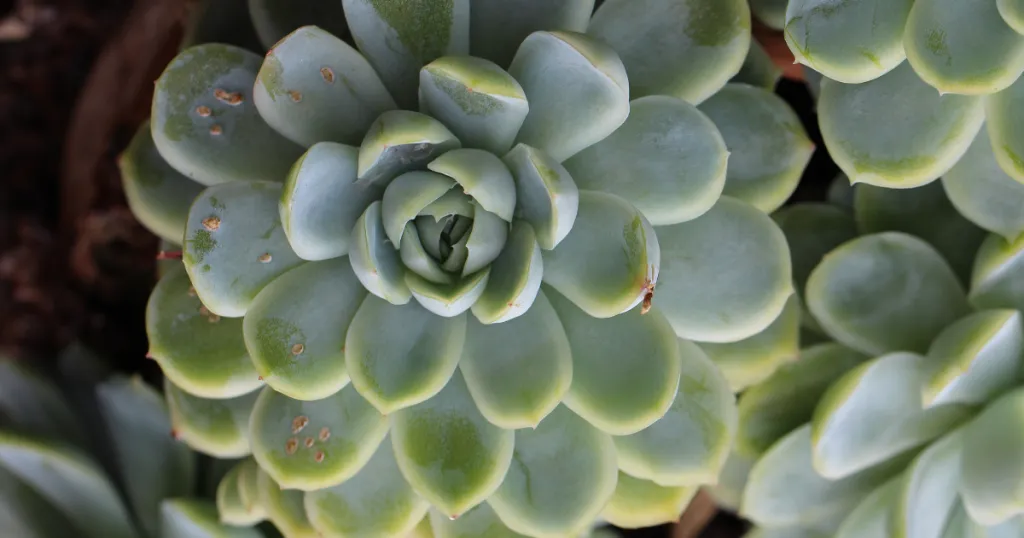
Another issue that can arise with Echeveria elegans ‘Mexican Snowball’ is etiolation, which is when the plant becomes elongated and leggy due to a lack of light. To prevent etiolation, ensure that Echeveria elegans ‘Mexican Snowball’ is getting enough bright, indirect light. If the plant has already become leggy, it can be pruned back to encourage bushier growth.
You might also like: 12 Succulent Pests and Diseases: Identification, Treatment, and Easy Prevention of Mealybugs, Thrips and More
Cold temperatures can be a problem for Echeveria elegans ‘Mexican Snowball’, as it is not frost-tolerant. To protect Echeveria elegans ‘Mexican Snowball’ from cold temperatures, bring it indoors or provide a frost cloth cover when temperatures drop.
Hardiness Zone & Temperature
Echeveria elegans ‘Mexican Snowball’ is hardy in zones 9-11. Echeveria elegans is sensitive to extreme temperatures. Cold drafts or frost can damage the plant, while excessive heat can cause sunburn. It’s important to maintain a stable temperature range, ideally between 65°F and 80°F. During colder months, consider moving your succulents indoors to protect them from frost damage.

Where to Buy Succulents Online

